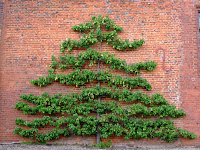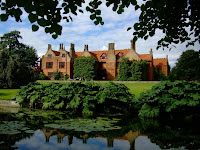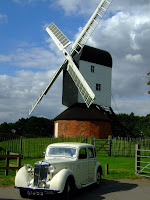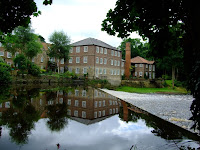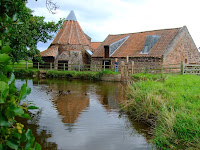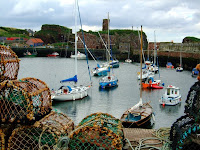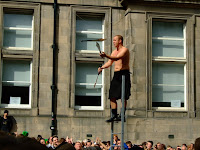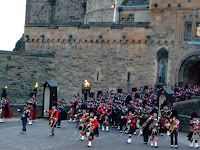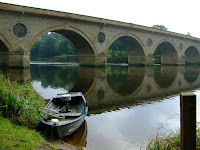
Popping briefly back across the border we visited Coldstream, birthplace of the Coldstream Guards. Also on the Scottish side of the Tweed and further upstream is

Floors Castle so we stopped in for a look around. The Castle is impressively large with Victorian embellishment turrets that make it quite fairy-tale-ish. They have recreated a French style parterre for the Millennium but there is nowhere suitable to view it from in order to get the full effect.
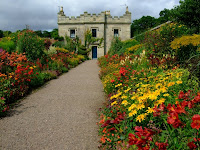
The 'hot' border in adjacent walled garden was at its peak and because cottage garden borders have to be seen when the blooms are in their prime was one of the best we have experienced on our travels.
Back in England we stopped at Chillingham Castle for a complete contrast. There was very little information about the recent history but we gathered that the current owner had inherited the Castle in a completely run-down state. He has ripped out many of the Victorian 'improvements' and now the Castle appears to be much as one would have seen it in its baronial days, rough
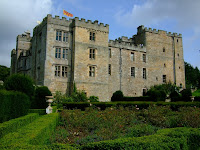
stone walls covered in all manner of hunting trophies, shields, swords and pikes; a far cry from the splendour of the State Rooms at Alnwick yesterday.
Stepping forward several centuries we arrived at Cragside, the Victorian home of Lord Armstrong whose Castle we visited yesterday at Bamburgh. This was the first house in the world to be lit by hydro-electricity and is also home to the biggest hand-made rockery in the world and
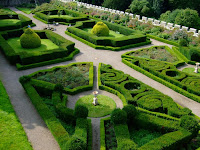
one of the largest collections of Douglas firs. As with many of these splendid homes a lack of descendants and the punitive effects of death duties meant that the family simply walked away, handing the property, house, furniture and contents over to the state. Having been rescued by the National Trust it means that anyone can now enjoy the results of Armstrong's

brilliance as his inventions and industry provided the financial resources he needed to build this as well as spend £1 million restoring Bamburgh Castle.
We stopped by a couple of cute Estate villages, Ford and Etal before enjoying a delightful meal at the Red Lion in Milfield.















